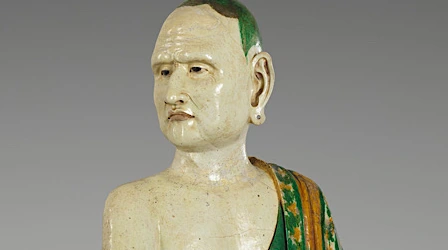Saṃyukta Āgama
Subscribe to this topic via: RSS
Taishō 99, parallel to the Saṃyutta Nikāya of Southeast Asia, contains early Buddhist texts in Chinese translation. Fragmentary versions can also be found at T 100–124, as well as in Sanskrit and Tibetan.
Table of Contents
Books (3)
-
… fundamental methodological points posed by the study of the Collections of Connected Discourses as windows into the formation of early Buddhist texts and the organisation of their transmission
1007 pages -
… revised versions of articles published previously. Each study is based on a partial or complete translation of the Saṃyukta-āgama discourse in question, followed by an examination of some aspects that I felt to be of further interest.
-
This book is a collection of studies on and translations from the Saṃgīta-varga of the Bieyi za ahanjing (BZA) (別譯雜阿含經 T.100) in 16 fascicles, a smaller, independent Chinese translation of the Saṃyukta Āgama (T.99).
Readings (24)
Featured:
-
This article contains annotated translations of canonical quotations in the Tibetan Abhidharmakośopāyikā-ṭīkā that parallel discourses nos. 467, 473, 474, 482, and 485–489 in the Vedanā-saṃyukta of the Chinese Saṃyukta-āgama (T 99).
26 pages -
This article contains annotated translations of canonical quotations in the Tibetan Abhidharmakośopāyikā-ṭīkā that parallel discourses nos. 231, 238, 240, 245, 252 and 255 in the chapter on the six sense-bases of the Chinese translation of the Saṃyukta-āgama
25 pages -
An analysis of the possible sectarian affiliation of the BZA (T.100) based on its handling of Sakka, along with translations of said Sūtras.
-
A translation of SA 861–872 together with EA 27.8
-
It may have originally contained just one discourse (on the standard five bala) and then later been expanded, independently in the two traditions.
-
the circumstances surrounding the translation of the Zá āhán jīng has shown that while there are problems connecting the translation done by Guṇabhadra to the manuscript brought back by Fǎxiǎn, there is ample circumstantial evidence to support this claim.
-
A translation of SA 892, 897, 899, and 900 parallel to SN 18 and 25–27.
-
Here I would like to give one example which may offer sufficient evidence to support the claim that the original texts of these Chinese Saṃyuktāgamas are indeed to be ascribed to the Sarvāstivādins.
See also:
Reference Shelf (2)
Featured:
-
A spreadsheet showing the reconstructed “proper” order of the SA discourses, along with a table of their known parallels in the Pāli and Āgama Canons.
See also:
In the Library (13)
Featured:
-
This article translates the fourth fascicle of the Saṃyukta-āgama, which contains discourses 33 to 58.
-
This article translates the second fascicle of the Saṃyukta-āgama, which contains discourses 256 to 272.
-
This article translates the third fascicle of the Saṃyukta-āgama, which contains discourses 59 to 87.
-
This article translates the fifth fascicle of the Saṃyukta-āgama, which contains discourses 103 to 110.
-
This article translates the first fascicle of the Saṃyukta-āgama, which contains discourses 1 to 32.
-
This article translates the eighth fascicle of the Saṃyukta-āgama, which contains discourses 188 to 229.
-
This article translates the seventh fascicle of the Saṃyukta-āgama, which contains discourses 139 to 187.
-
In this article I translate the first half of the ninth fascicle of the Saṃyukta-āgama, which contains discourses 230 to 249.
-
In this article I translate the second half of the ninth fascicle of the Saṃyukta-āgama, which contains discourses 250 to 255.
-
This article translates the sixth fascicle of the Saṃyukta-āgama, which contains discourses 111 to 138.
See also:
